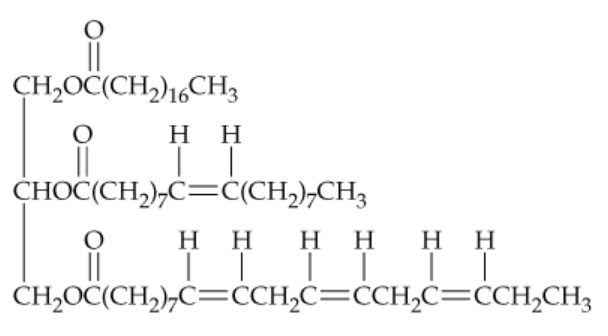Identify each of the following processes as hydrogenation, hydrolysis, or saponification and give the products:
a. the reaction of corn oil and hydrogen (H2) with a nickel catalyst

 Verified step by step guidance
Verified step by step guidance Verified video answer for a similar problem:
Verified video answer for a similar problem:



 3:1m
3:1mMaster Triacylglycerol Reactions: Hydrogenation Concept 1 with a bite sized video explanation from Jules
Start learning